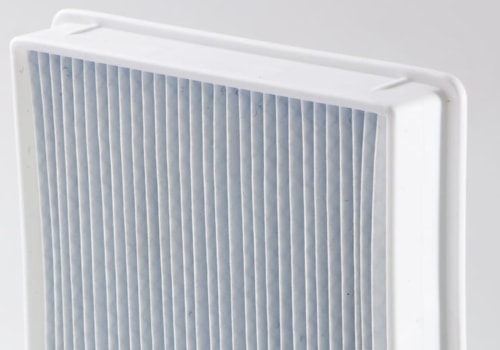Since air filters are most often sold by their nominal dimensions, it is essential to understand how to measure them correctly. When purchasing, you should order the filter by its nominal size, rather than its actual size. The nominal size is the size you see printed on the side of the air filter and is derived from the actual size, which is rounded to the nearest whole inch. There are hundreds of filter sizes, and while manufacturers can make small changes and offer very slight differences in their many filter sizes, the nominal size system ensures that you, the consumer, don't have to have custom air filters every time you need some clean air.
The easiest way to identify the size of your air conditioner filter is to remove the existing filter from its slot and examine the filter frame. Usually, the filter size is printed along the edge of the filter frame. Note that the size shown in bold type on the filter frame is the nominal size of the filter, which is likely to differ from its actual size. If the actual dimensions do not appear in small print on the filter frame, we recommend measuring the filter to double check it.
In this case, you'll want to round down to the nearest whole number to determine the nominal air filter size. The actual size of the air filter should be 0.25 -0.5 smaller than the slot or frame itself. The slots of the HVAC unit are usually located near the bottom of the air handling unit. It's best to have some wiggle room in the slot of the HVAC unit, so you can easily slide the filter in and out without it bending or breaking. If you have to clog the air filter to install it, try a different brand of oven filter or a custom sized air filter with a slightly smaller actual size.
The central air return grilles are usually located on the ceiling of the hallway or on the wall of the hallway in your house. If the return vent is on the roof, you may want to use a filter that is a little larger in actual size, so that it does not fall on you when you open the vent. When purchasing a custom-sized air filter, it is important to remember that there is a difference between nominal and actual sizes. Once you have determined your exact dimensions that work best for you, place an order for that exact fraction or decimal of your preferred measurements. Otherwise, you may get a different actual size than you expected. To convert actual to nominal size, measure each side of your filter with a measuring tape and round each dimension to its nearest inch.
You also don't want to fit a 1 inch air filter into a 2 inch slot because air takes the path of least resistance and will flow around rather than through it if it's not sized correctly. If you're looking for a retailer near you that sells custom-sized air filters, you might be struggling to get lucky. If you can't find your size in store or need a custom-made air filter, online sellers are probably your best option. The nominal size is usually printed on cardboard edge of an air filter and is all you really need to know when looking for one. The two Carrier replacement filters shown below have a nominal size of 20x25x5 but two completely different actual sizes. If you live in an older house with a non-standard sized air return frame, you can use adhesive foam insulation tape to slightly increase your preferred filter's dimensions or order a custom-sized air filter. To ensure that your next purchase is correctly sized for your system, measure inside dimensions of your air filter inlet before ordering. Gaps will allow dust, dirt and germs to bypass your filter and potentially re-circulate in your home's air. Once again, before wasting time with HVAC unit manipulator or return air central ventilation, first adjust thermostat to turn off air conditioning system.



